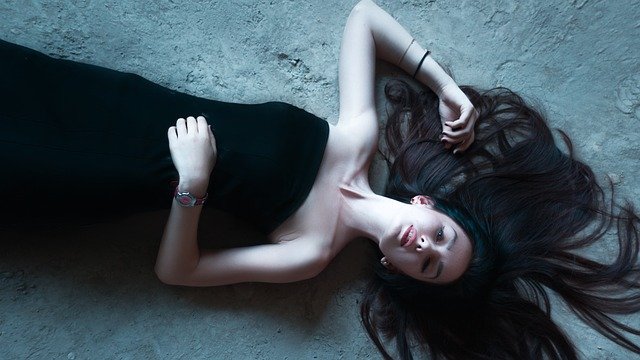To protect your hair when coloring, start by choosing high-quality products like ammonia-free dyes with nourishing ingredients such as argan oil or keratin. This minimizes damage and maintains vibrant color. Next, properly prepare your hair by washing it 24 to 48 hours before coloring to let natural oils provide extra protection. Use a wide-tooth comb to detangle and apply petroleum jelly on your hairline to avoid stains. After coloring, maintain vibrant, healthy hair by using products designed for color-treated hair, washing with lukewarm water, and incorporating weekly deep conditioning treatments. Explore ways to further enhance your hair care routine.
Choose the Right Products
Choosing the right products can greatly impact the health of your hair when you're coloring it. It's crucial to select high-quality dyes and conditioners specifically formulated for your hair type. When picking a hair dye, opt for those that are ammonia-free or contain natural ingredients. These gentler options reduce damage and help maintain your hair's natural shine and strength. Don't just grab the first box you see; instead, read the labels and research products that have good reviews and are known for being less harsh.
Look for products that contain nourishing ingredients like argan oil, keratin, or aloe vera. These elements help to protect your hair during the coloring process, preventing brittleness and split ends. It's also wise to choose a color that's not too far from your natural shade, as drastic changes can require more potent chemicals.
Additionally, don't underestimate the importance of a good conditioner. A deep-conditioning treatment specifically designed for color-treated hair can make a significant difference. It locks in moisture, keeps your color vibrant, and minimizes damage. By being selective with your hair products, you're taking a crucial step towards maintaining healthy, beautiful hair.
Prepare Your Hair
Having selected the right products, it's important to focus on preparing your hair before you start the coloring process. This vital step guarantees your hair remains healthy and vibrant. First, make sure your hair is clean but not freshly washed, as natural oils protect your scalp and strands. Washing your hair 24 to 48 hours before coloring allows these oils to build up, offering a protective barrier.
Next, detangle your hair to guarantee an even application. Use a wide-tooth comb or your fingers to gently remove knots, minimizing damage. This simple action helps distribute the color uniformly, avoiding patchiness. Finally, protect your hairline and ears by applying a thin layer of petroleum jelly or a similar product. This prevents unwanted staining and makes cleanup easier.
Remember, taking these preparatory steps can make a big difference in the outcome of your coloring session. Here's why:
- Avoiding Damage: Proper preparation shields your hair from unnecessary harm.
- Achieving Even Color: Smooth, detangled hair leads to consistent results.
- Preventing Stains: Protecting your skin guarantees a professional finish.
Maintain Post-Color Care

Once you've colored your hair, it's crucial to follow a post-color care routine to keep it looking its best. Start by using a shampoo and conditioner specifically formulated for color-treated hair. These products help maintain vibrancy and protect against fading. Make sure to wash your hair with lukewarm water, as hot water can strip color and moisture, leading to dullness.
Incorporate a deep conditioning treatment into your routine once a week. This helps replenish moisture and repair any damage caused by the coloring process. Look for masks that contain nourishing ingredients like argan oil or keratin, which can strengthen and hydrate your hair.
Minimize heat styling to prevent further damage. When you do use heat tools, apply a heat protectant spray to shield your hair. Air-drying is also a great option to reduce heat exposure.
Lastly, protect your hair from environmental factors. Wear a hat or use a UV protectant spray when you're out in the sun. Chlorine and saltwater can also be harsh, so rinse your hair thoroughly after swimming. By following these steps, you'll keep your color vibrant and your hair healthy.
Frequently Asked Questions
Can Coloring Cause Long-Term Damage to My Hair?
Yes, coloring can cause long-term damage if you're not careful. Repeated use of harsh chemicals can weaken your hair, leading to dryness and breakage. It's essential to take protective measures to maintain your hair's health.
How Often Should I Color My Hair to Minimize Damage?
Did you know 70% of salon-goers color their hair every 6-8 weeks to minimize damage? You shouldn't color more often than that. This schedule gives your hair time to recover, maintaining its health and vibrancy.
Are There Natural Alternatives to Chemical Hair Dyes?
You might consider trying natural alternatives like henna, indigo, or chamomile. They're less harmful and can enhance your hair's health. Always test on a small section first to see how your hair reacts.
What Should I Do if My Scalp Feels Irritated After Coloring?
If your scalp feels irritated after coloring, rinse thoroughly with cool water. Apply a soothing aloe vera gel or a diluted apple cider vinegar solution. Avoid heat styling and harsh products until the irritation subsides.
Is It Safe to Color Hair During Pregnancy?
Coloring hair during pregnancy can be safe if you're cautious, choose ammonia-free dyes, and ventilate the room. Consult your doctor for personalized advice, and always conduct a patch test to avoid any allergic reactions.
At a Glance
So, you've become a DIY hair colorist, ready to transform your locks into a masterpiece. Remember, you're not just an artist; you're a mad scientist in the lab. Choose the right potions, or products, to avoid turning your hair into straw. Prepare your hair like a knight readying for battle. And finally, maintain that color like it's the last bottle of shampoo on earth. Because, let's face it, nobody wants hair that looks like a weathered mop!






